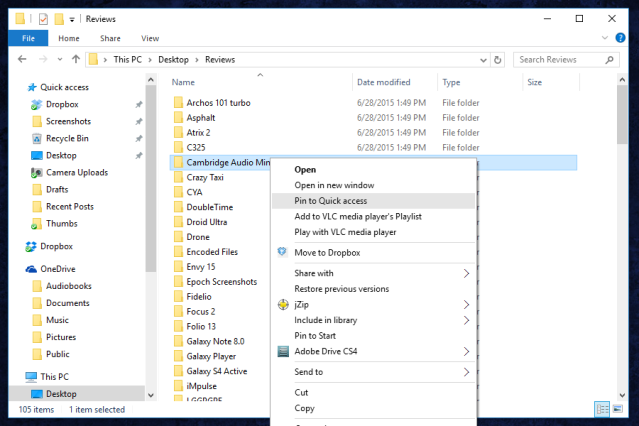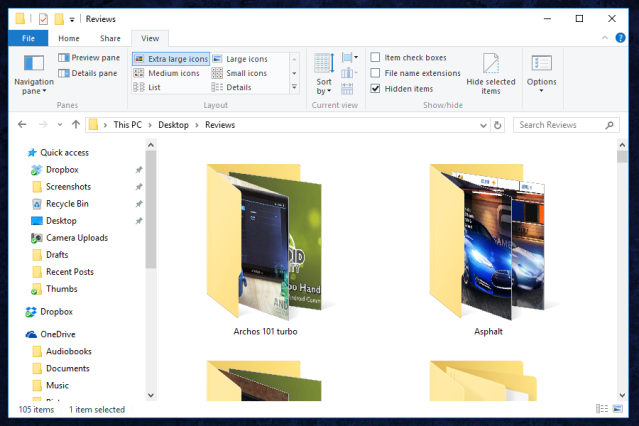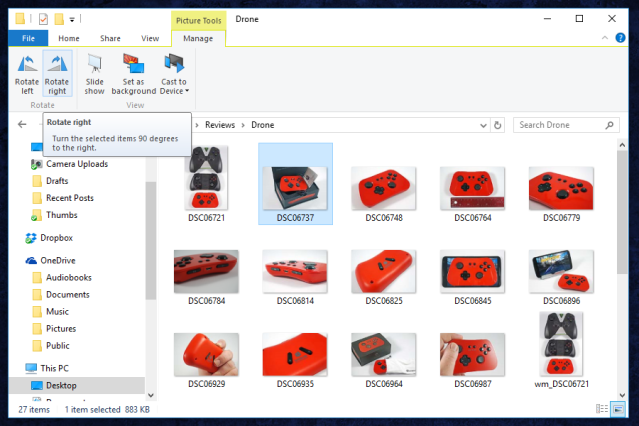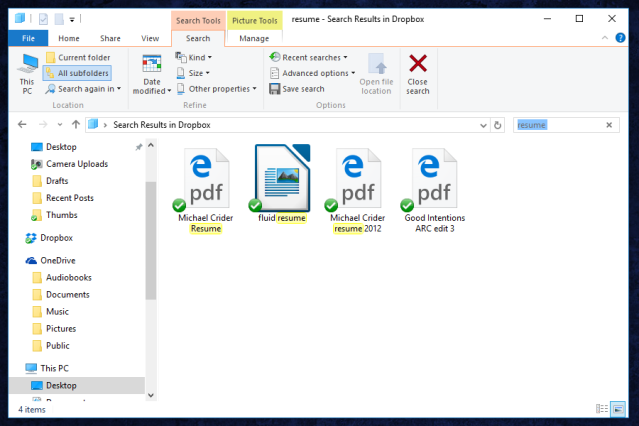The File Explorer program, formerly known as Windows Explorer, has been a core element of the operating system for decades. Like most of the various portions of the OS, they have given it a noticeable overhaul in Windows 10. There are plenty of new tools to get acclimated to, though the basic layout and functionality will be familiar to anyone who has used Windows XP or later. Here’s a quick guide on some finer points of the new File Explorer.
Quick Access
The Quick Access area, which by default is the first section of the Navigation Pane in the left-hand column, is essentially a Bookmarks bar for File Explorer. It shows both your most recently accessed folders and pinned folders (folders that you manually assign to this area) to get to and from any folder in Windows with ease. You can do this with any folder in Windows — just right-click or long-press any folder on any screen, then click Pin to Quick Access.
Now you’ll be able to open this folder from any other folder instantly. Dragging and dropping files and folders will move them (or copy them, if they’re on a separate drive). To remove a folder from the Quick Access view, simply click the Pin icon to the right of the folder label. To remove frequently accessed folders, right-click the folder, then select Remove From Quick Access.
OneDrive, Microsoft’s cloud storage service, gets a dedicated folder beneath the Quick Access area. Other folders on your computer are available in a tree view below OneDrive.
Ribbon interface
Most user interface space of File Explorer is dedicated to displaying icons and the tree view on the left side because opening and moving files and folders are what you’ll be doing 90% of the time. More advanced functions are available in the ribbon interface (introduced in Windows 8), which you can open by clicking Home, Share, or View. You can make this area visible at all times by clicking the Down button next to the folder name in the window header, then de-selecting Minimize the Ribbon.
The Home ribbon isn’t all that useful, if only because the functions inside it are all available as standard clicks or well-known keyboard shortcuts, like copy and paste. Share shows functions that are less common: You can use these buttons to send specific files or folders to a ZIP archive, print or fax documents, burn files to a CD or DVD, or share them using Windows’ built-in networking tools.
The View tab is where some more interesting tools are located. Here you can enable or disable the Navigation pane (where the Quick Access section is) and show or hide separate panes for Preview (which will show larger versions of things like photos or videos) and Details (which show more technical aspects of a file or group of files at a glance). In the Layout section, you can select entirely different views for this specific folder. More advanced tools are available by clicking the Options icon, then clicking Change Folder and Search Options. Try out all the different view options — you may find that some of them are very useful, especially in folders with large amounts of files.
File menu
In later versions of Windows, they moved a lot of the functionality in the File menu to other portions of File Explorer, but there are still a couple of handy tools here for power users. For both the Command Prompt and Windows PowerShell tools, the File menu will let you open new instances with the current folder already active (which can save a lot of tedious typing). Need administrator privileges? Just hover over the icon, then click Open Command Prompt/Windows PowerShell As Administrator.
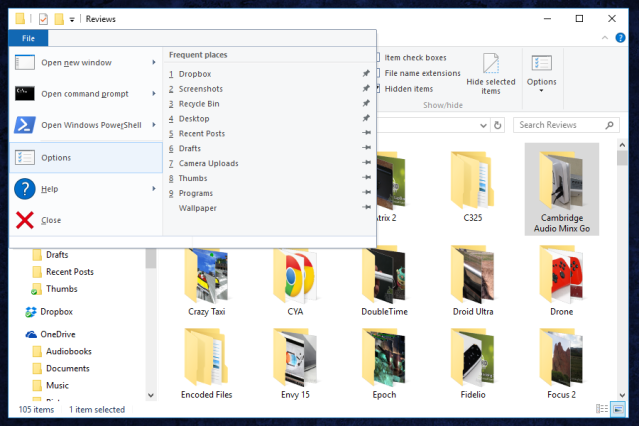
There are a couple of other tricks as well. To quickly get to a Quick Access folder without using the mouse, click Alt + F to open the File Menu. From here, click any number key to open the corresponding Quick Access folder in sequence. You can also use the Change Folder and Search Options view to pin or unpin any folder with ease.
Picture tools
File Explorer contains some basic photo tools as well, but they’re hidden by default. Open a folder with photo files inside, then click on one. A new yellow tab, Picture Tools, will appear above the Manage Ribbon tab. Click it, and you can quickly access tools to rotate a photo left or right, start a slideshow with the default photo viewer, or set a photo as your desktop background.
Searching
File Explorer has a search bar, just like most modern internet browsers. It’s an integrated part of Windows, but when you use the Search function in File Explorer itself, your search will be limited to the folder you currently have open (plus any files contained in folders inside that folder).
This is especially useful if you have dozens or even hundreds of files in a folder. When you type the name of the document in the Search function, it will pull up a list of relevant results. Word documents and PDFs might show up as results if they contain a word similar to your search term in the body of the file itself. If you’re not sure where exactly one of your search results is located, right-click it and select Open File Location to open the relevant folder instantly.
Clicking the search bar will also open the Search Tools portion of the Ribbon interface (which is usually hidden). This gives you options to narrow your search according to date, file size, file type, or within a specific folder.
Unfortunately, the File Explorer search doesn’t have all the functionality of a full Cortana search. If you use terms that are too general, you won’t be able to find what you need.
Useful keyboard shortcuts
While File Explorer has dozens of keyboard shortcuts, here are some of the most useful:
- Windows key + E — open a new instance of File Explorer from anywhere in Windows.
- Alt + P — show or hide the Preview pane.
- Alt + Shift + P — show or hide the Details pane.
- Alt + left arrow key — go back one folder in your history.
- Alt + up arrow key — go up one folder in the folder tree.
- Ctrl + N — open a new File Explorer window.
- Ctrl + E — activate the Search bar.
- Ctrl + Shift + N — create a new folder in the current folder.
- Ctrl + mouse wheel up or down — increase or decrease the size of icons and thumbnails.
